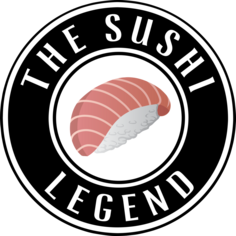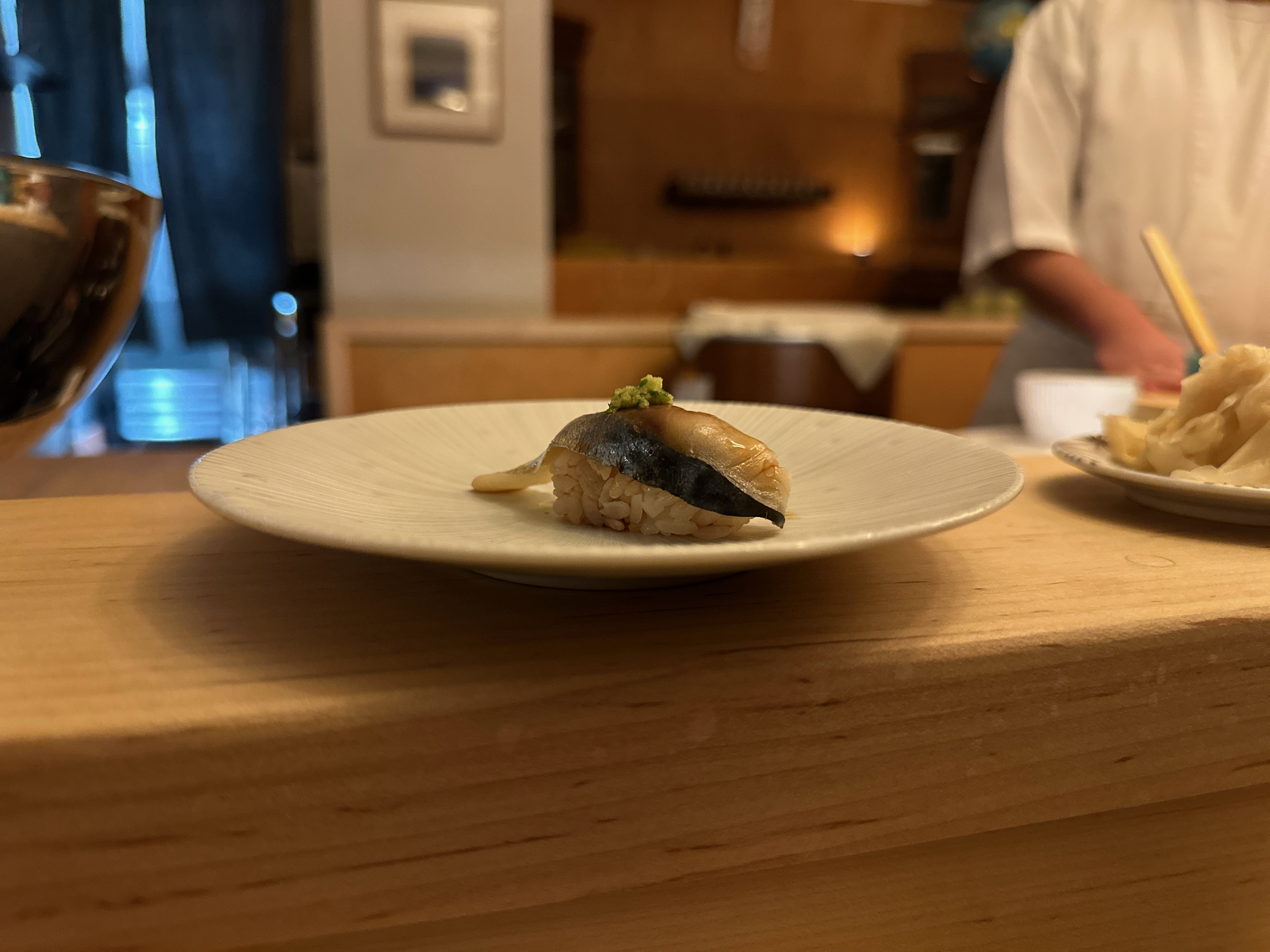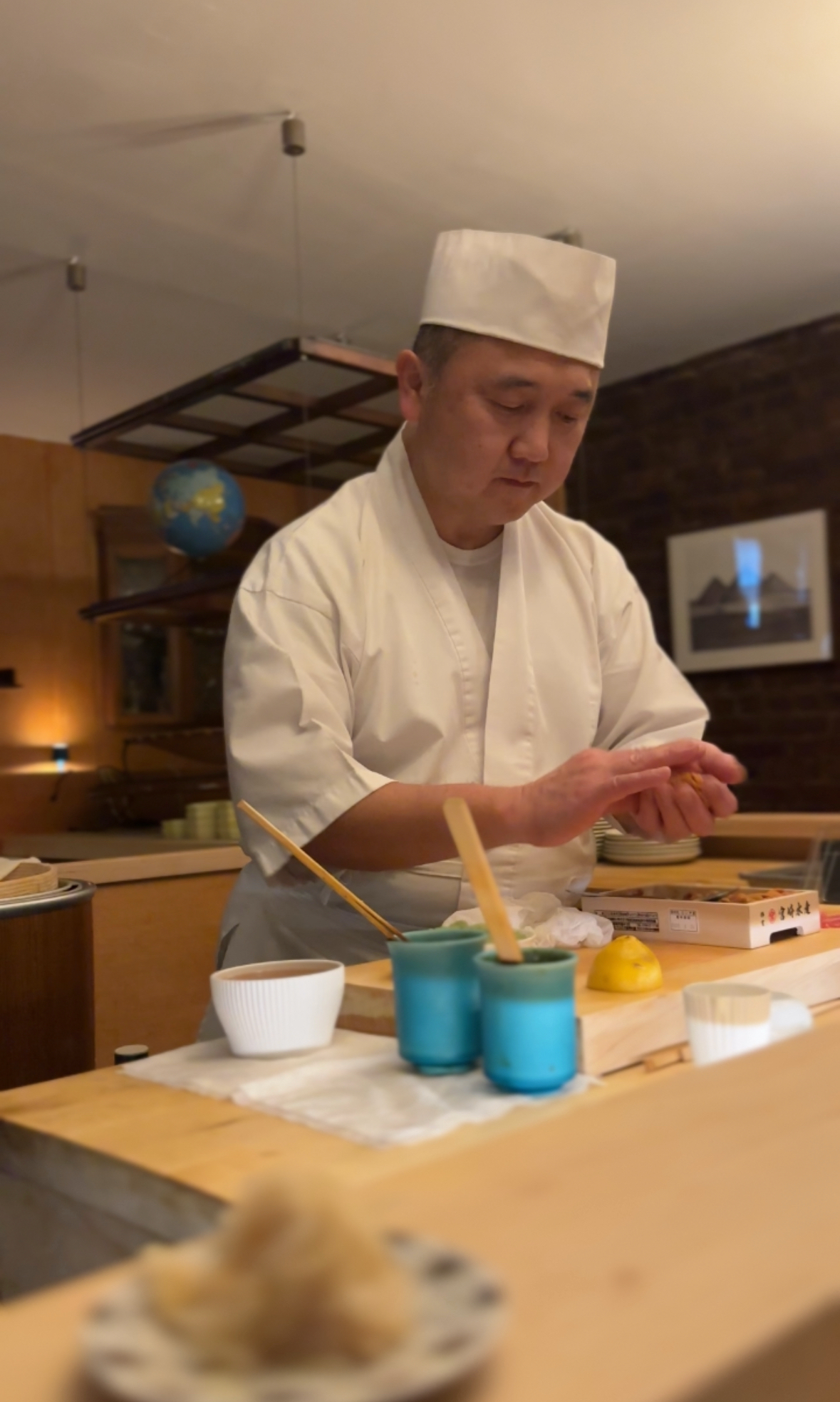
Mitsuru Tamura
The West Village’s Mitsuru is one of the best new sushiya of the year.
You wouldn’t know it from the internet.
Limited Google reviews. Limited-er Yelp reviews. Not a single article anywhere.
Fortunately, like Batman, I’m hear to save Gotham yet again. I visited recently and cleared my schedule to get this review up. Skipped leg day and everything.
You’re welcome.
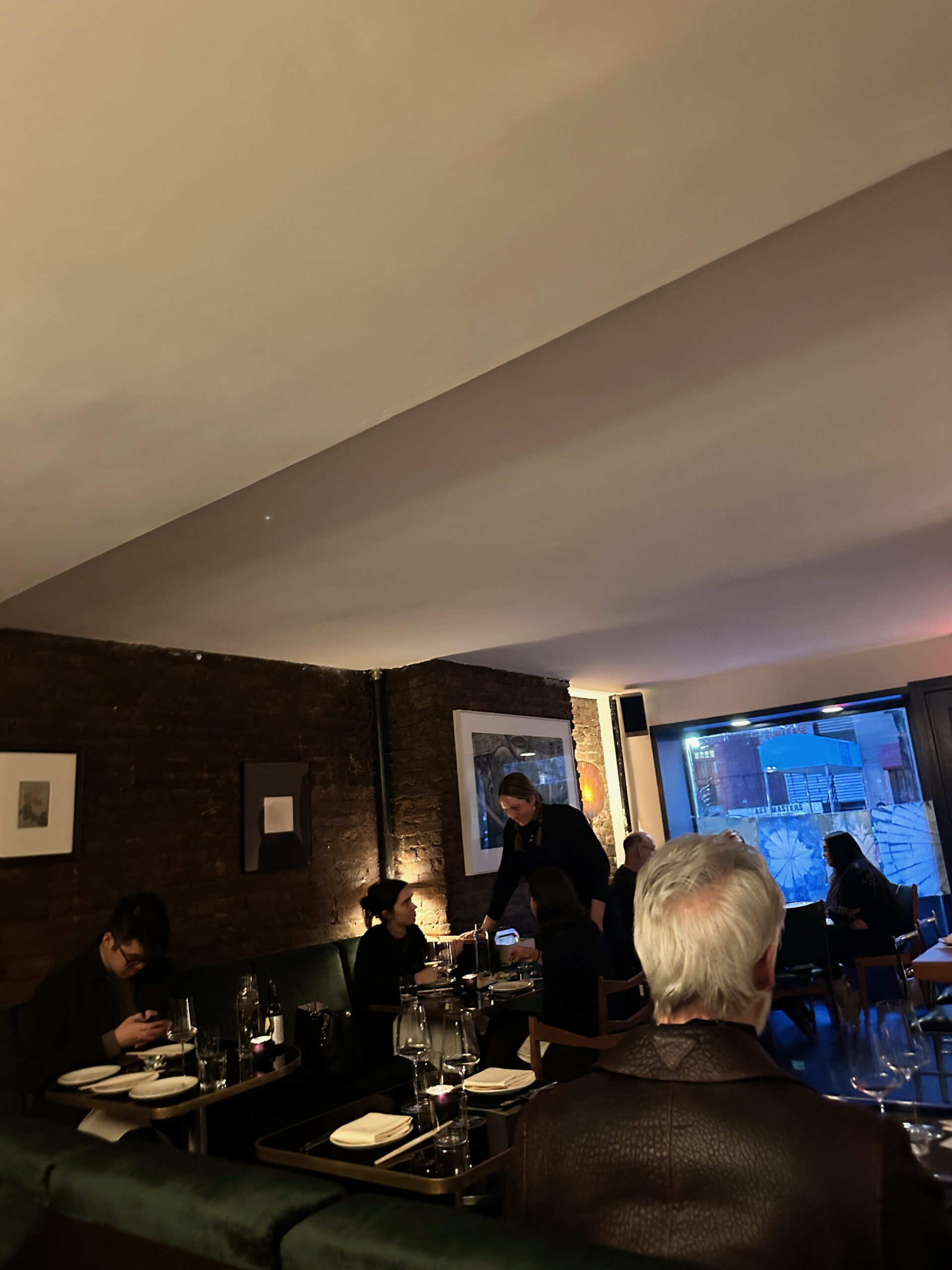
Table area
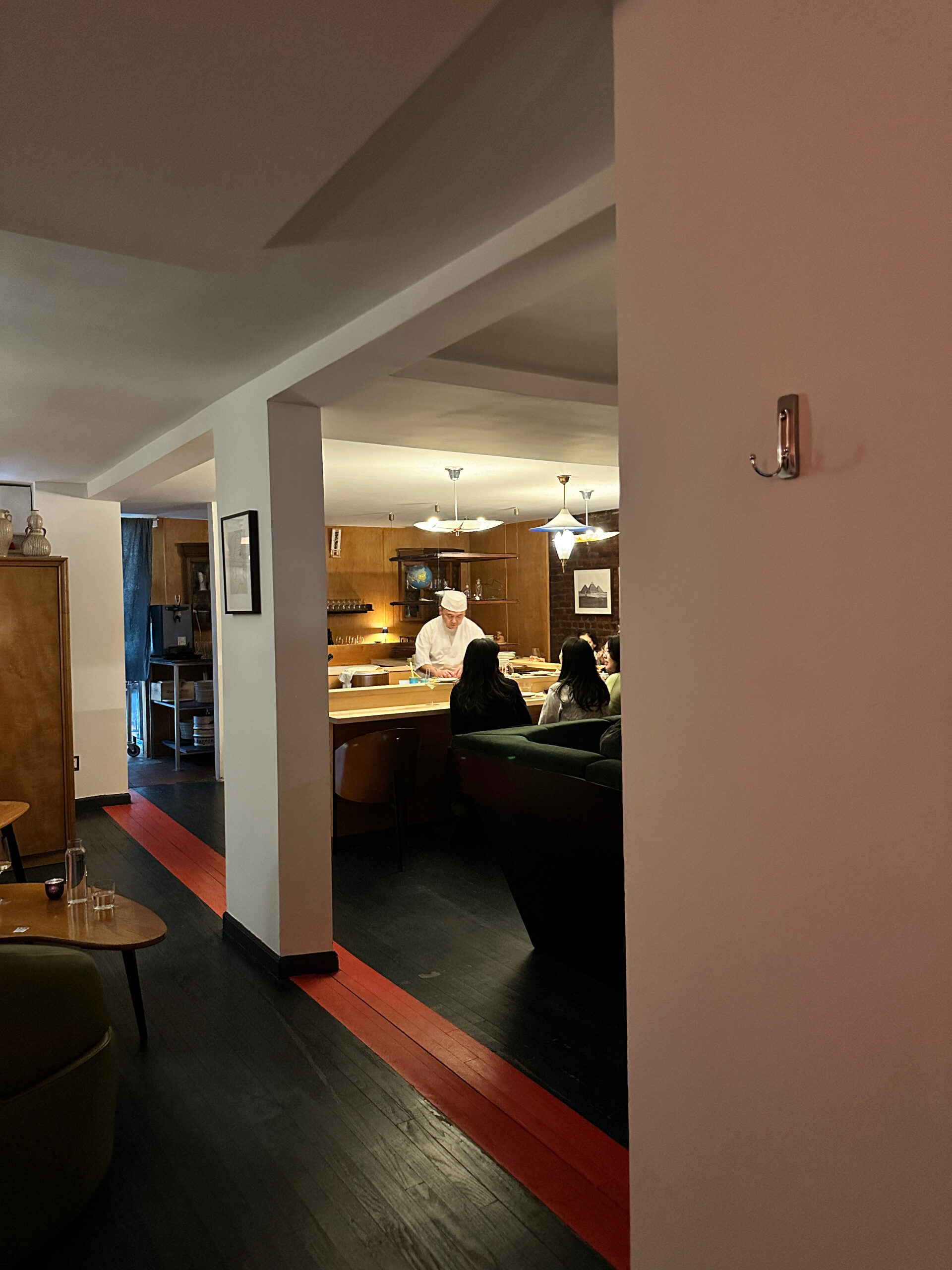
View from front
Mitsuru is the brainchild of Mitsuru Tamura and Grant Reynolds of Parcelle
Mitsuru-san is an alum of Sushi Yasuda, one of New York’s defining sushiya of the early 2010s. I’ve been getting Instagram messages for years from legends singing his praises. When he left Yasuda, he opened a pop-up inside the Chinatown outpost of Parcelle, a renowned wine group.
That led to a permanent location at West 4th and 6th avenue. Sushi for dinner, waiting in the Comedy Cellar standby line for dessert.
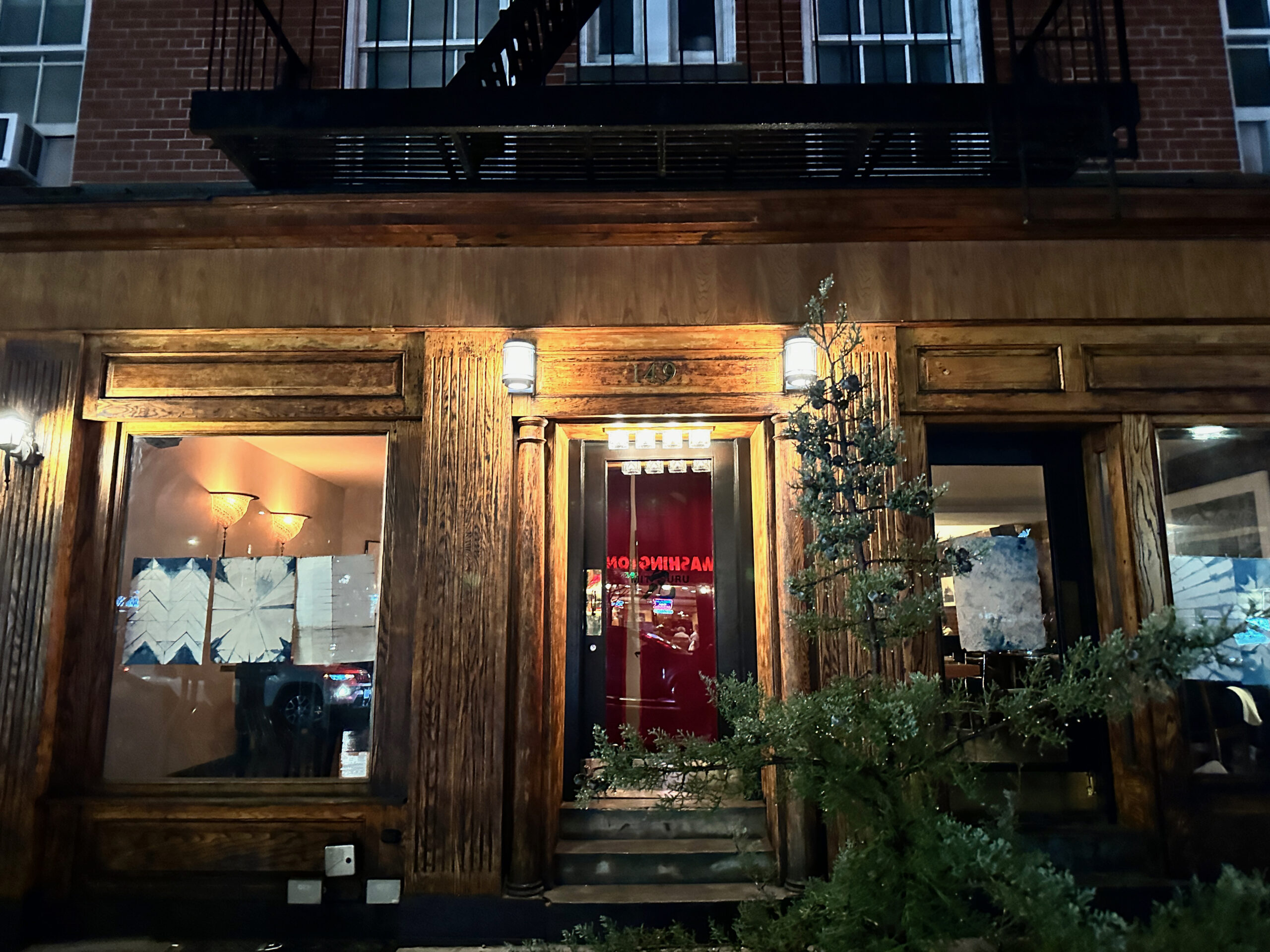
Outside
Inside is an eight-seat counter and a half-dozen tables
The counter is Omakase-only. Two options. $150 for sushi (about 14 courses), or $250 for sushi plus a few otsumami and dessert. I went with the former.
The tables are a la carte or omakase-only (served platter style, not course-by-course). The lights are dimmed. Coupled with Parcelle’s wine program and a big window for people watching, and the atmosphere is perfect for dates with long, awkward gaps in conversation.
The struggle is that there’s only one person on sushi duty. Mitsuru-san. And while there’s folks in the kitchen, it’s clear there’s timing issues at the table.
That’s where the wine comes in I guess.
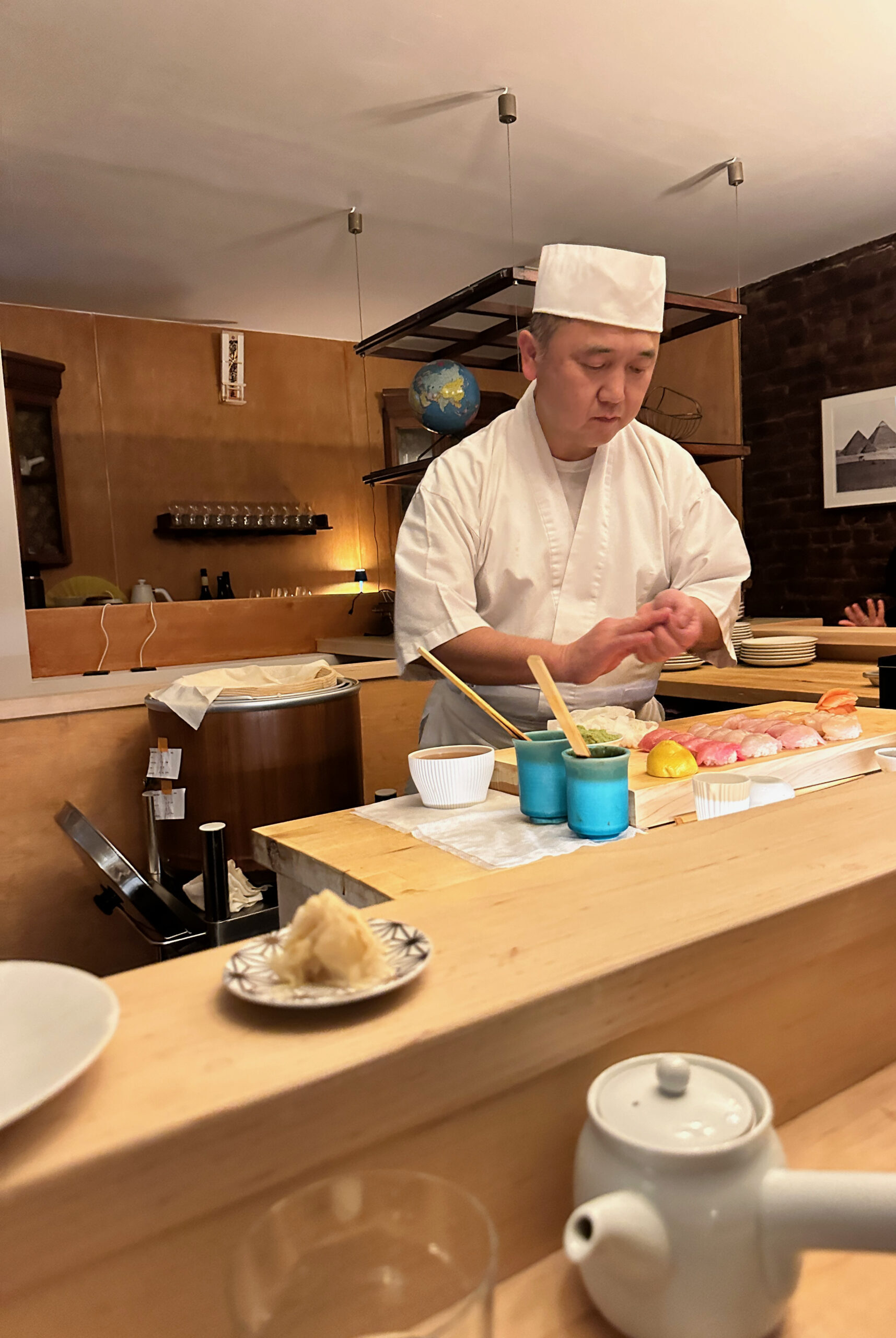
Mitsuru-san has to prepare sushi for the tables as well as the counter – hence the armada of sushi
The meal at the counter is brisk
As it should be.
Let me repeat that, again: As. It. Should. Be.
Sushi isn’t cooked (most of the time. more on that shortly), which makes 3 hour experiences like Kanoyama particularly annoying.
At Mitsuru, the 14-course sushi-only omakase took 40 minutes.
So let’s talk about the sushi
Because it’s fantastic. Mitsuru-san’s sushi is on the larger side; some mind, I don’t. Sushi used to be 3 times the size back in the 1850s (look it up).
And rather than overload on rice vinegar, Mitsuru-san relies on lemon zest for a number of sushi for flavor, along with generous amounts of nikiri (interestingly, the servers, all of whom are incredibly kind humans, bring supplemental soy sauce from the jump. Completely unnecessary).
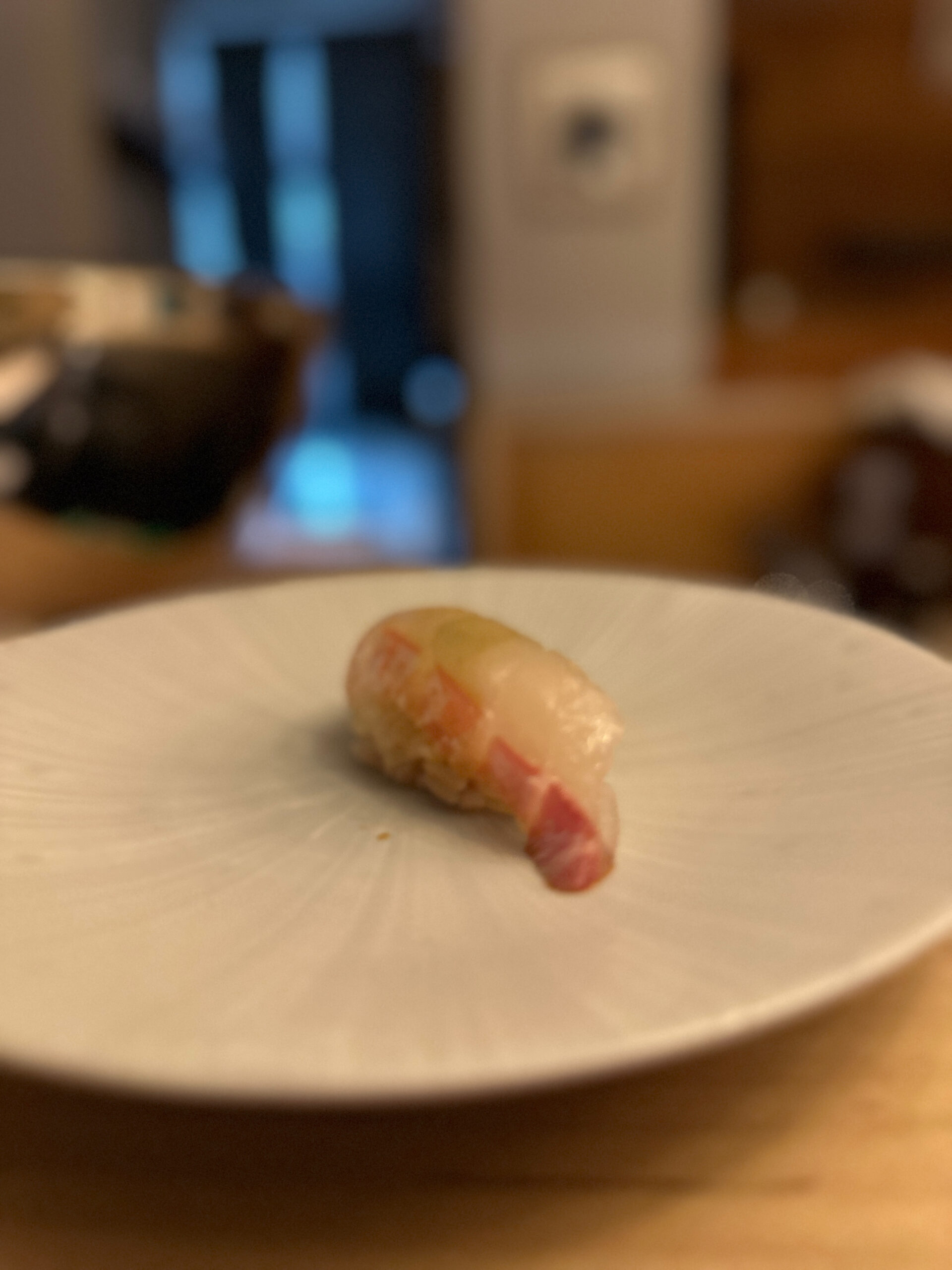
1: Madai with lemon zest (this will be a theme)
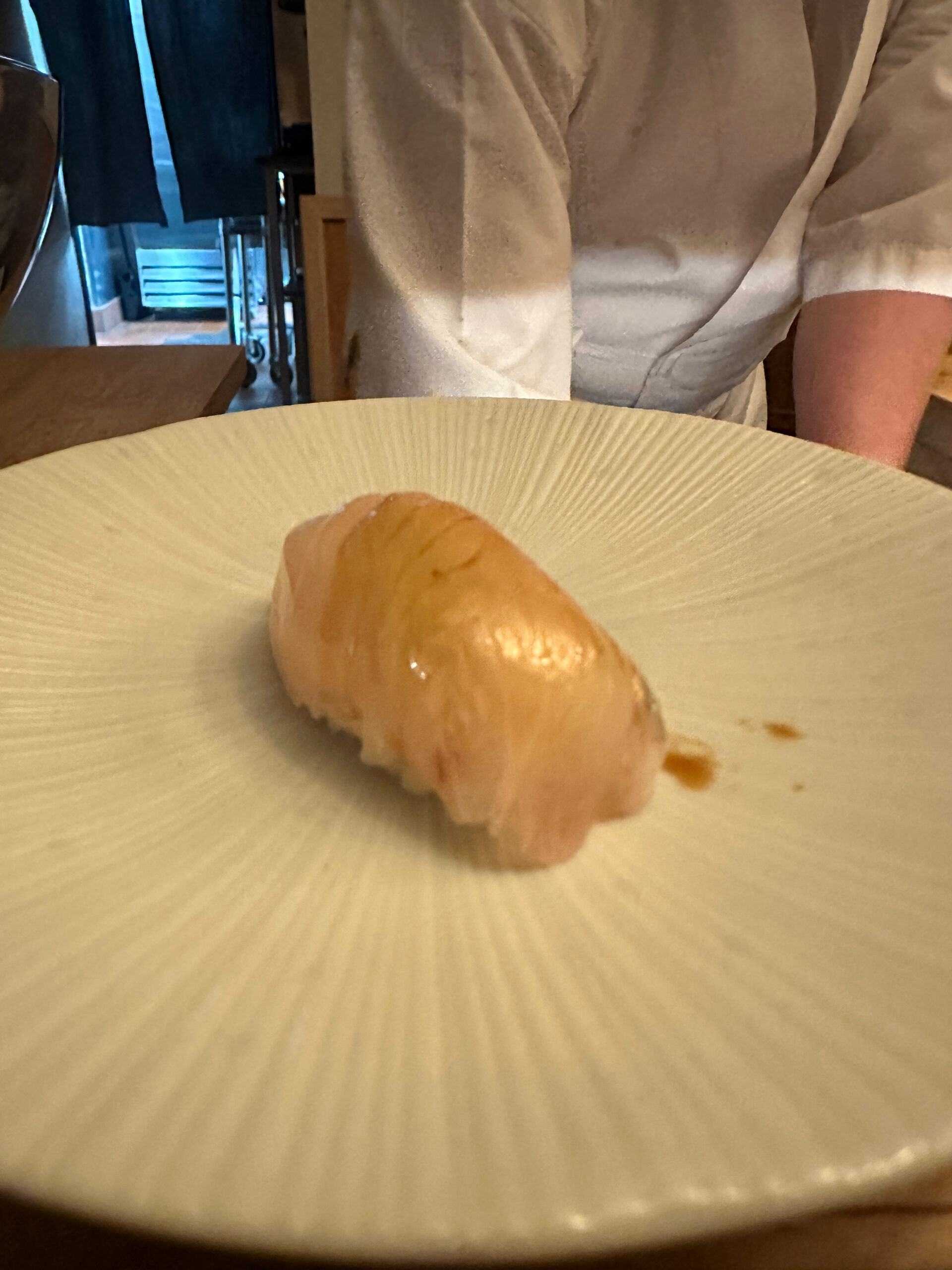
2: Shima Aji
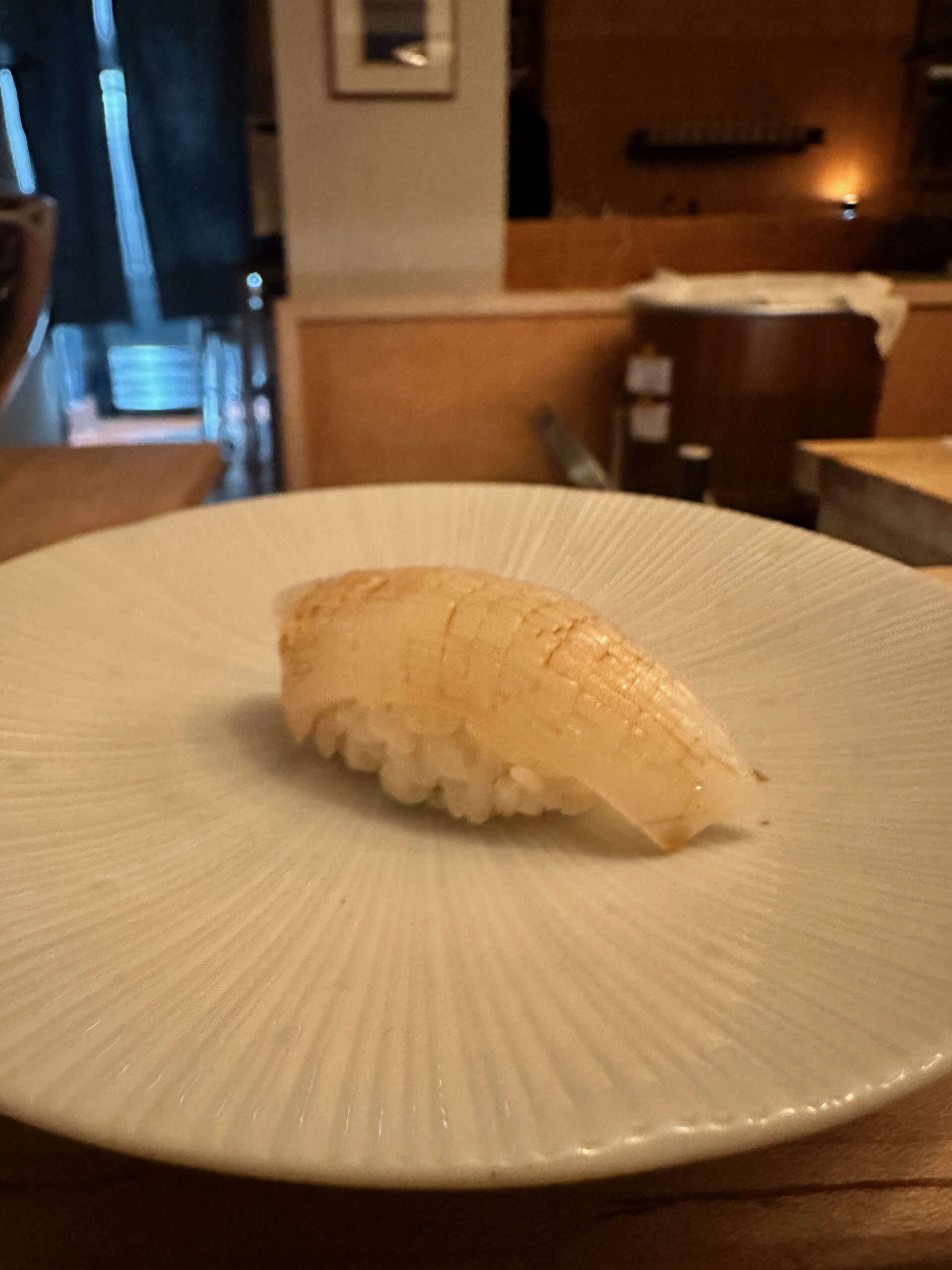
3: Presented as Ika (squid), my guess – and there are so many squid species – is that this is yari-ika (spear squid).
Unfortunately, our old friend Mr. Blowtorch makes his return
I’ve been leading the charge against blowtorches for years. Wrote a whole article about it. Longtime readers are probably sick of me bringing it up.
Too bad.
Mitsuru-san uses it twice. For the kinmedai and again, later, for the o-toro. I’m not a body language expert, I just play one while watching the Maple Leafs.
But watching Mitsuru-san use 18 inches of butane to light up some delicious tuna belly, I couldn’t help but notice a reticence. Like Severus Snape, that beautiful man, taking orders from above.
“Do I really have to?”
Hopefully it vanishes like Dumbledore (uh, spoiler alert).
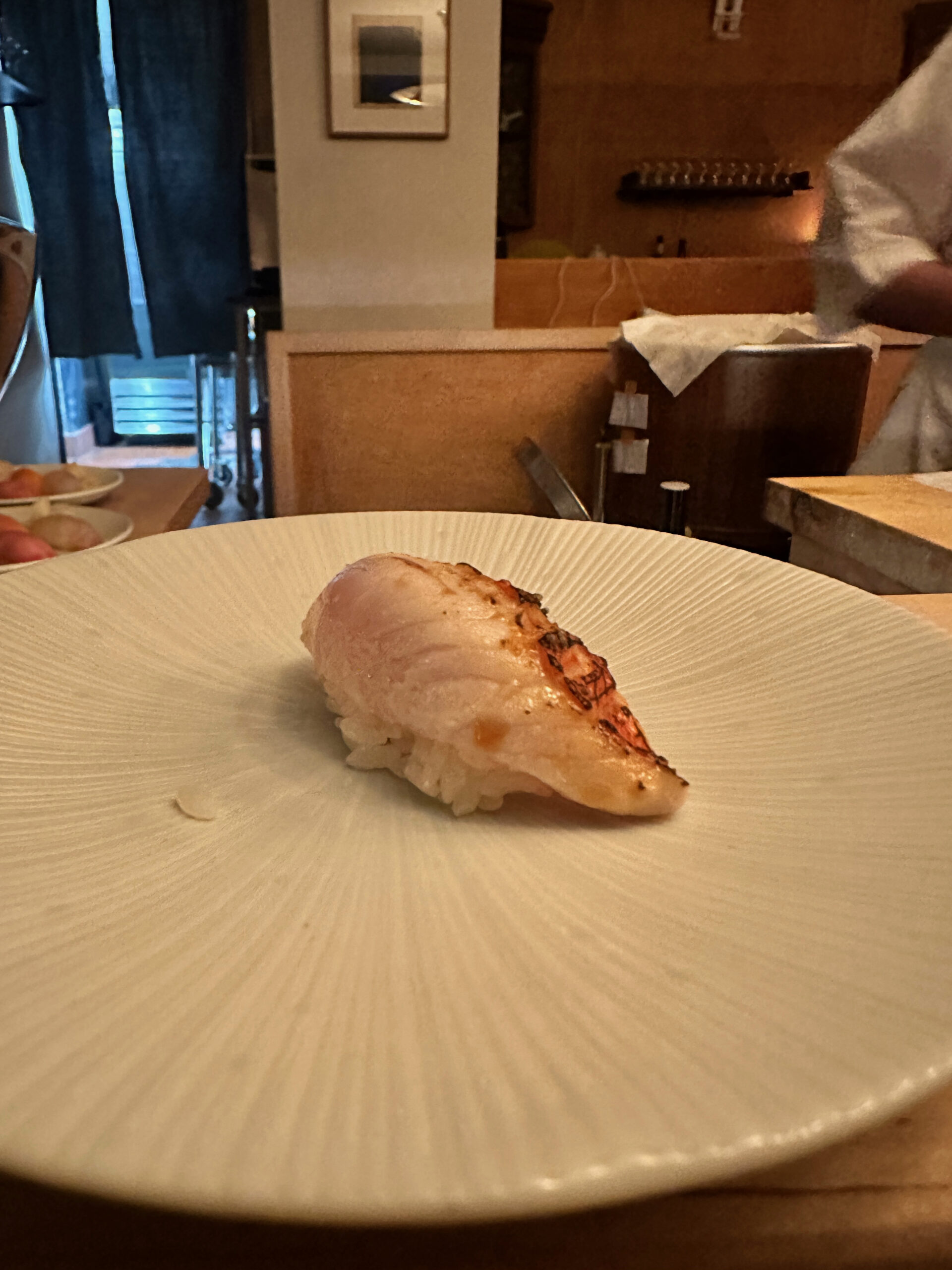
4: kinmedai aburi
Botan Ebi a reminder of his expertise
Oh, do I love Botan Ebi (peony shrimp). When served properly, its cooler temperature and chewy texture contrasts perfectly against warmer shari (rice). And yes, that’s the first and last time you’ll hear any sort of “professional” food analysis.
The second step in serving Botan Ebi usually comes after it’s eaten. The kitchen presents the heads of the shrimp, battered and fried. Delicious, and a reminder that the shrimp came in whole, and nary a part was wasted.
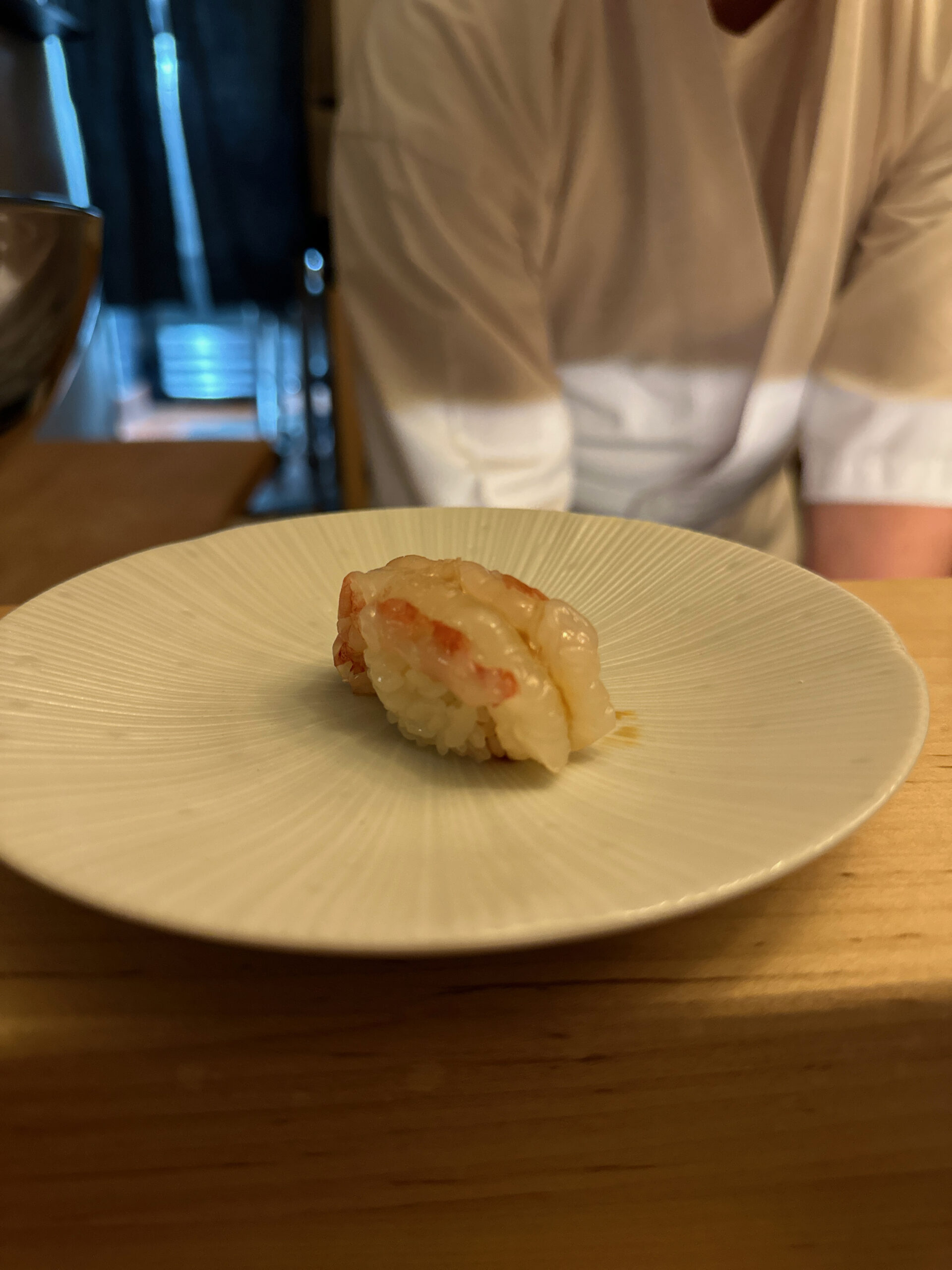
5: Botan Ebi
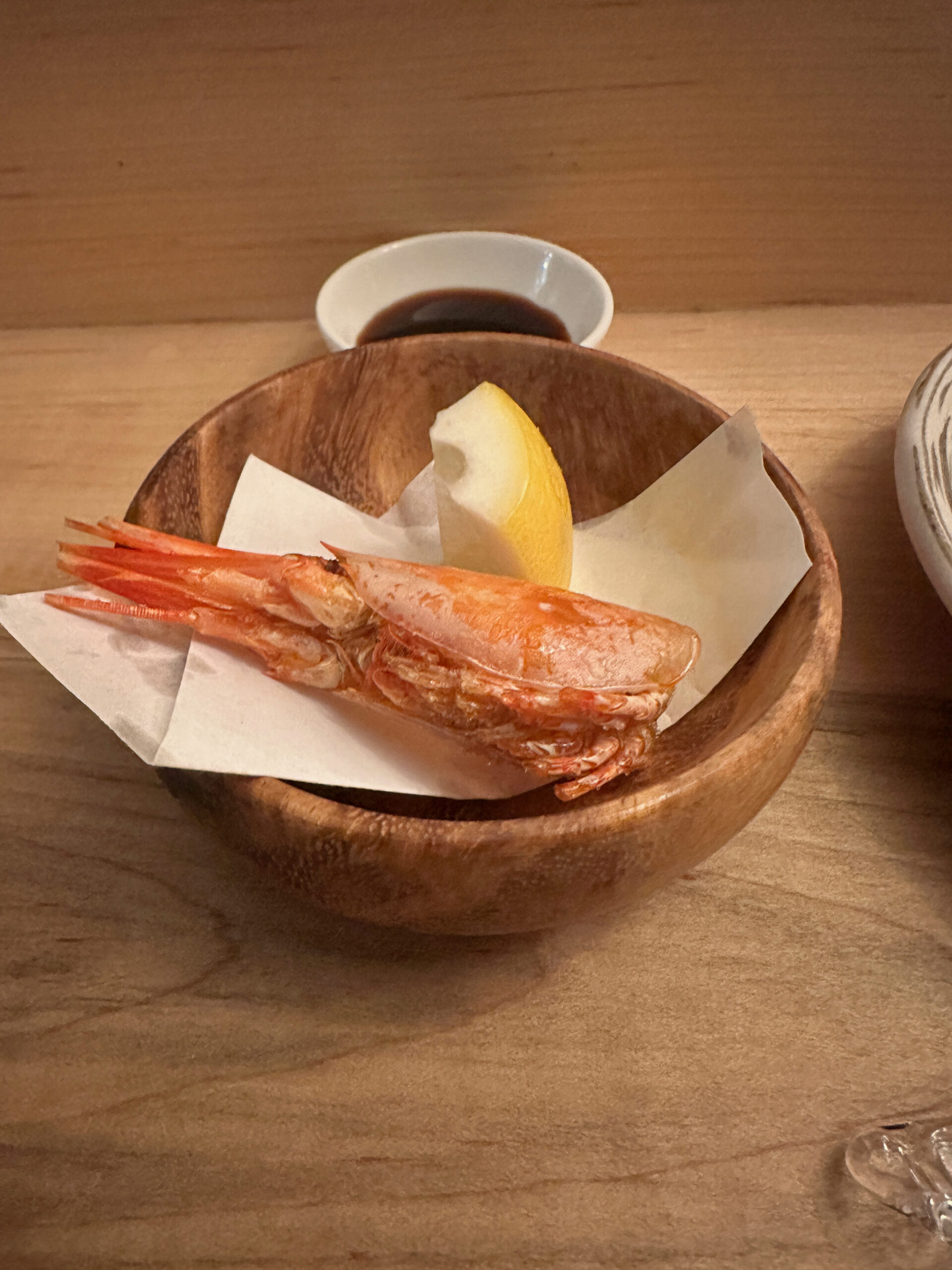
Heads are served like they should be
Ma-saba gets the award for best dressed
I’m not a food scientist, but I know enough to drop little nuggets on the blog and hope they’re accurate.
And one thing about ma-saba – king of the traditional mackerel that’s served in sushi – is that it contains enzymes that start post-mortem degradation quickly. Simply put: if you’ve ever wondered why mackerel tastes “fishy”, there’s your answer.
But for folks like yours truly, that’s a feature, not a bug. Of course, it takes skill to prepare, like other hikarimono (silver-skinned fish).
Mitsuru-san’s saba, perfectly marinated (called shime-saba), delightfully contrasted against his shari, is the meal’s highlight. And it left me wanting more hikarimono.
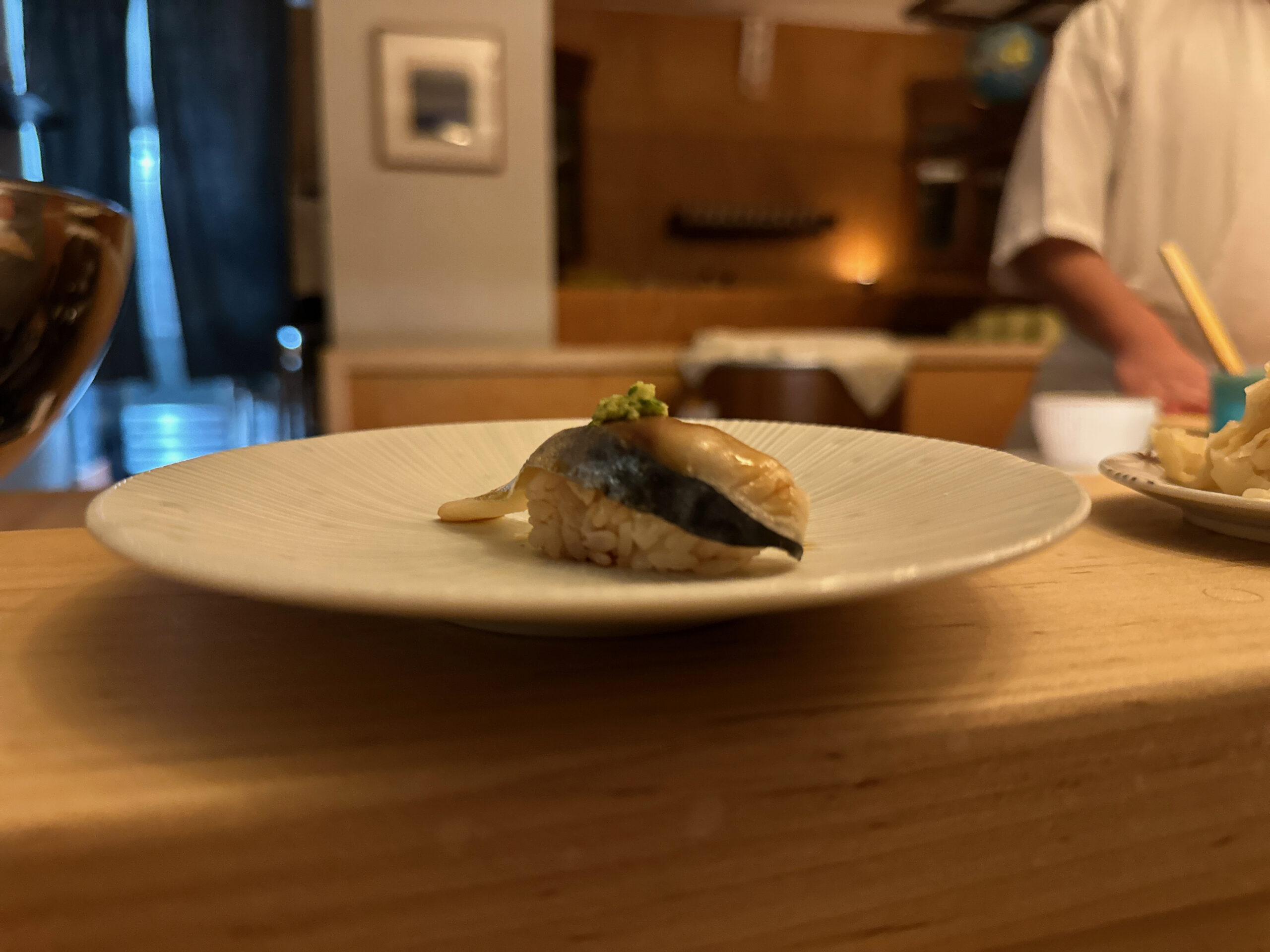
7: Shime-saba
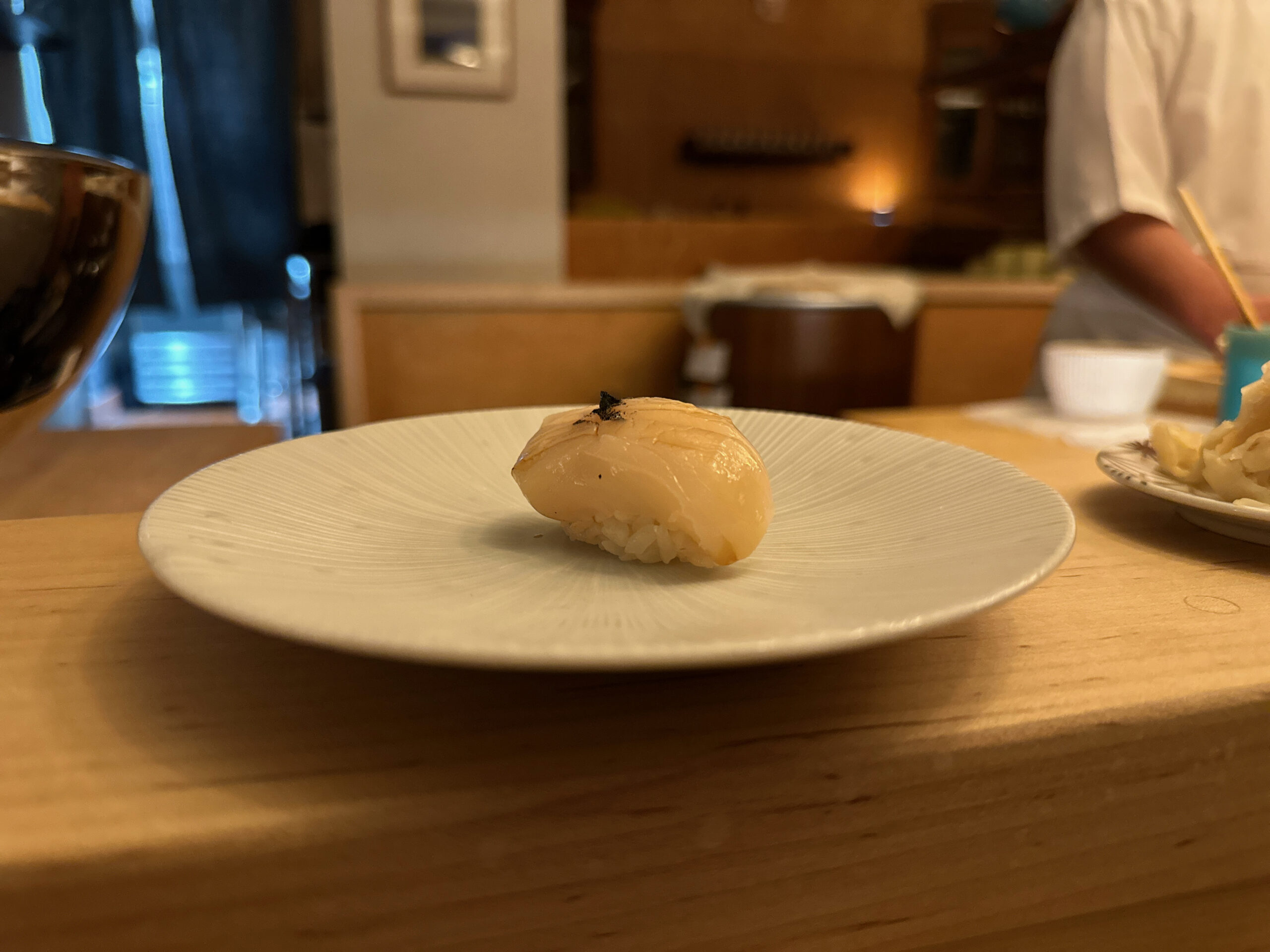
7: Hotategai
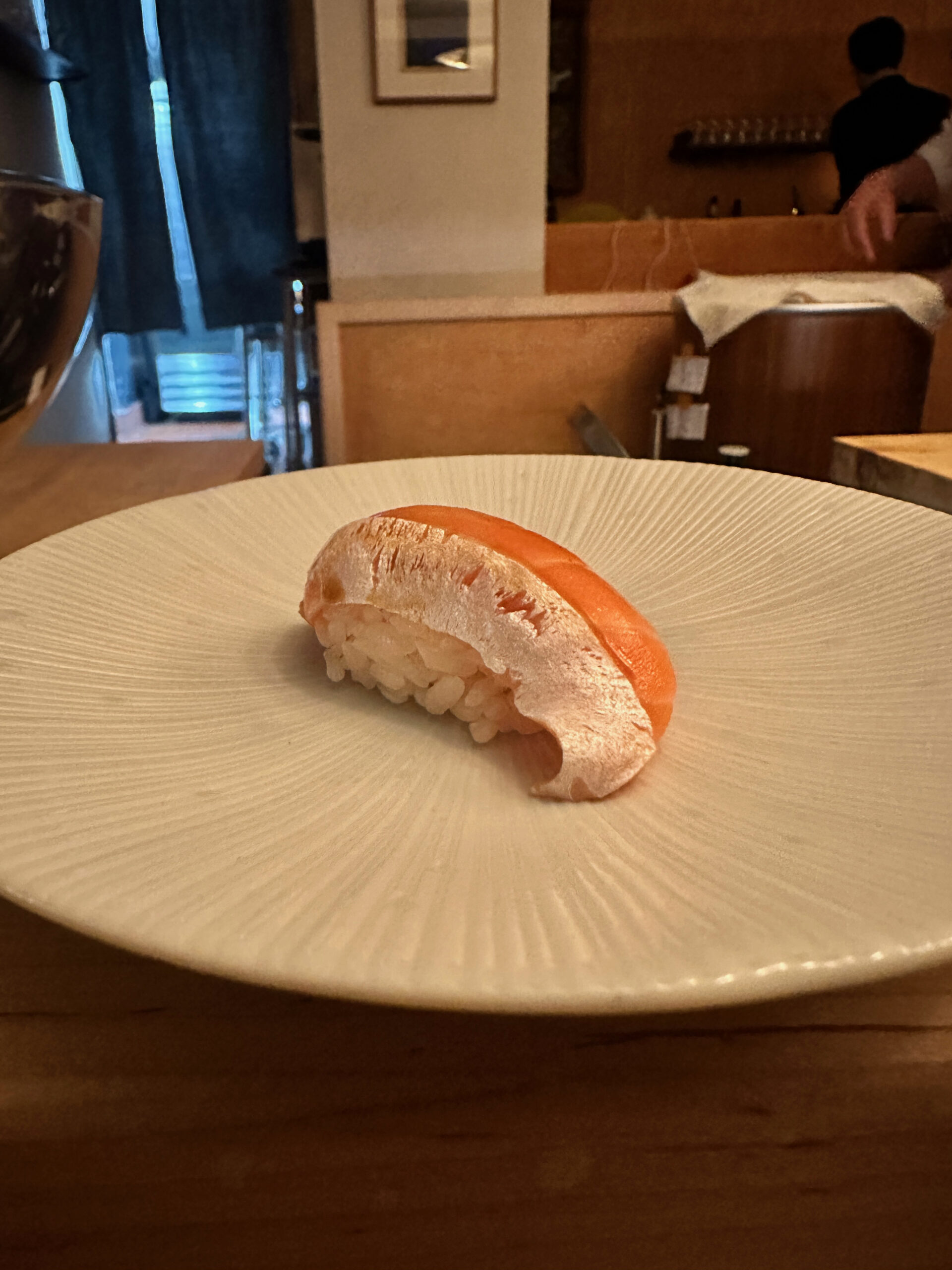
8: King Salmon
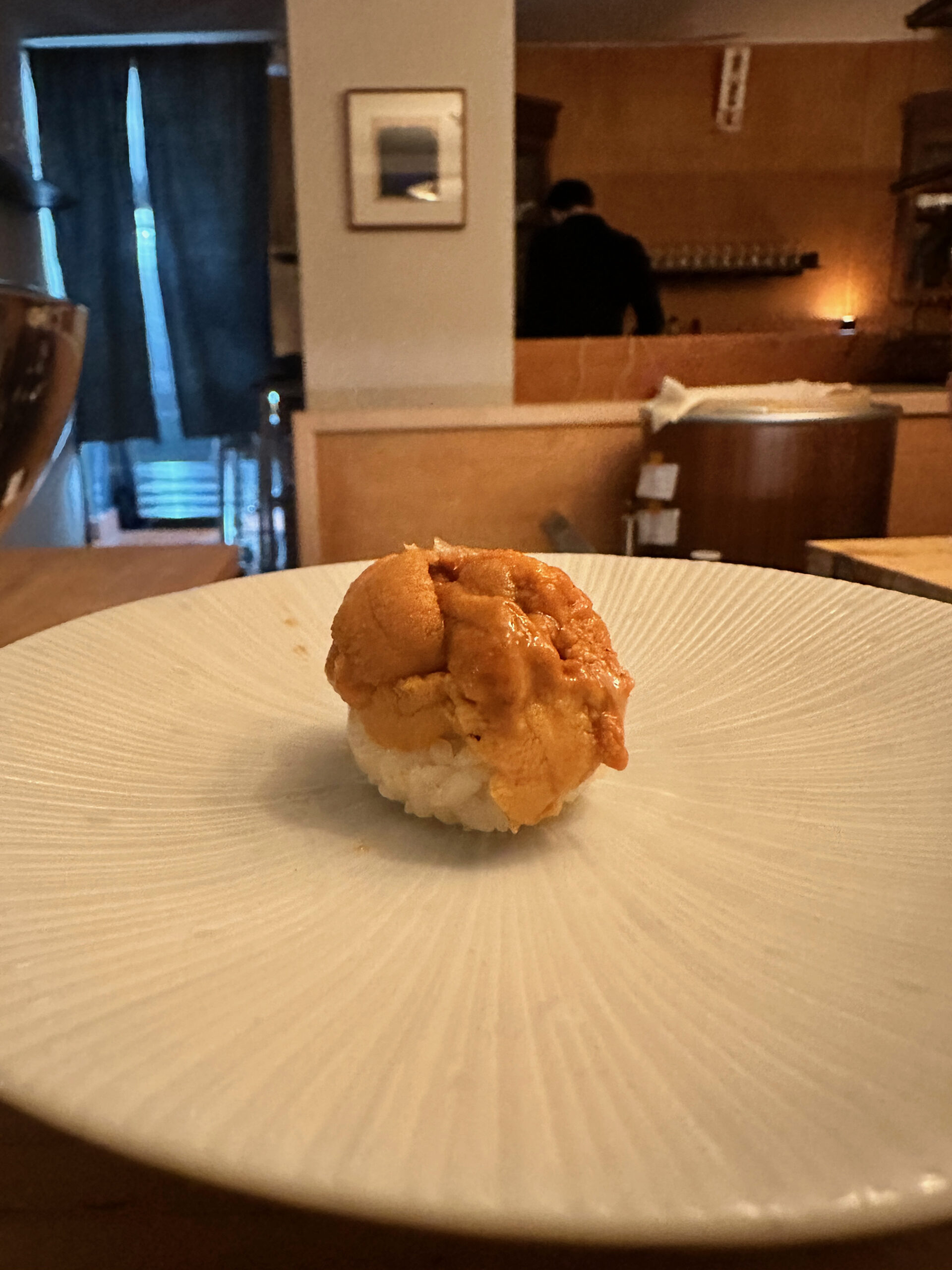
9: Uni
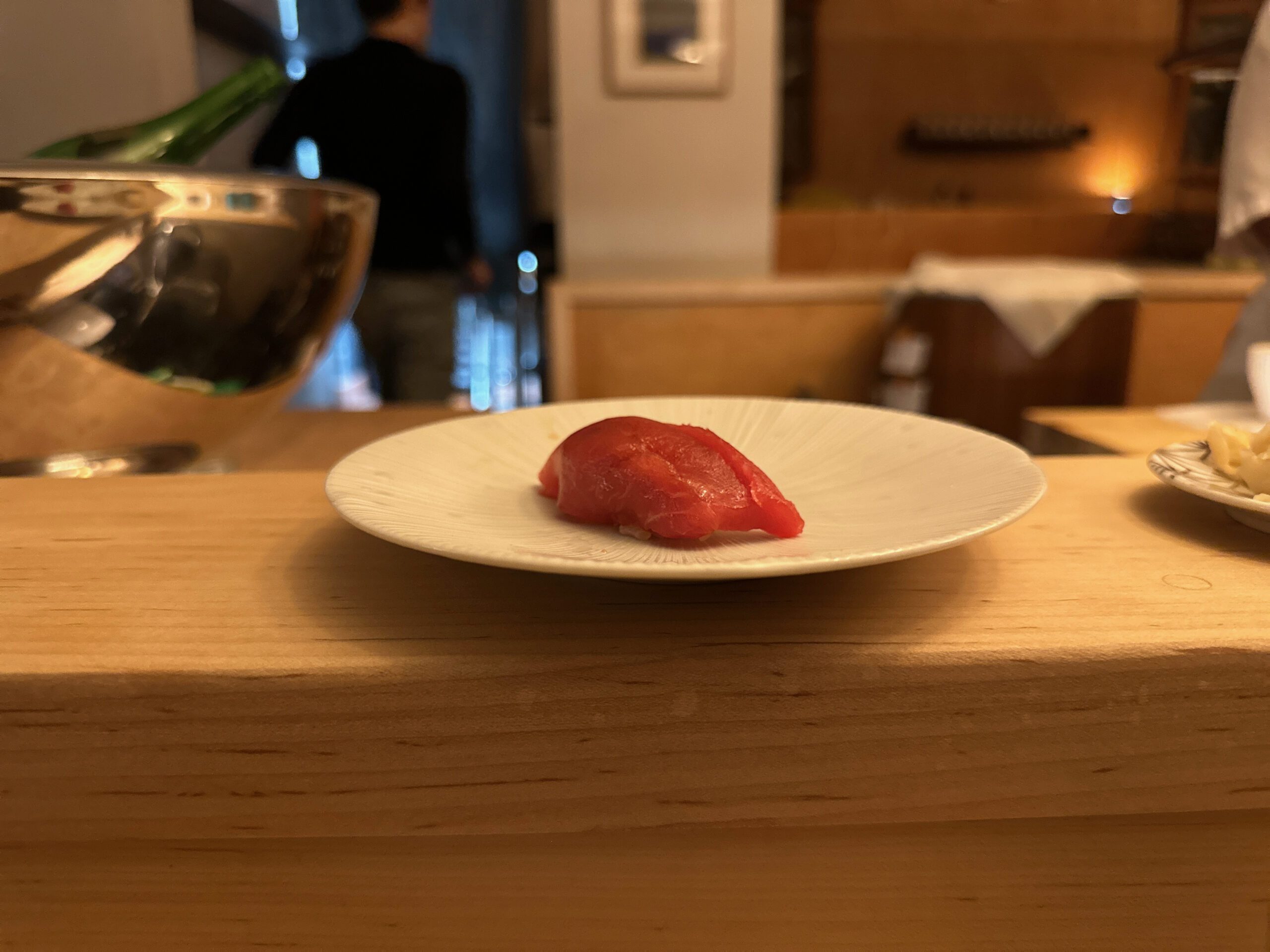
10: Akami
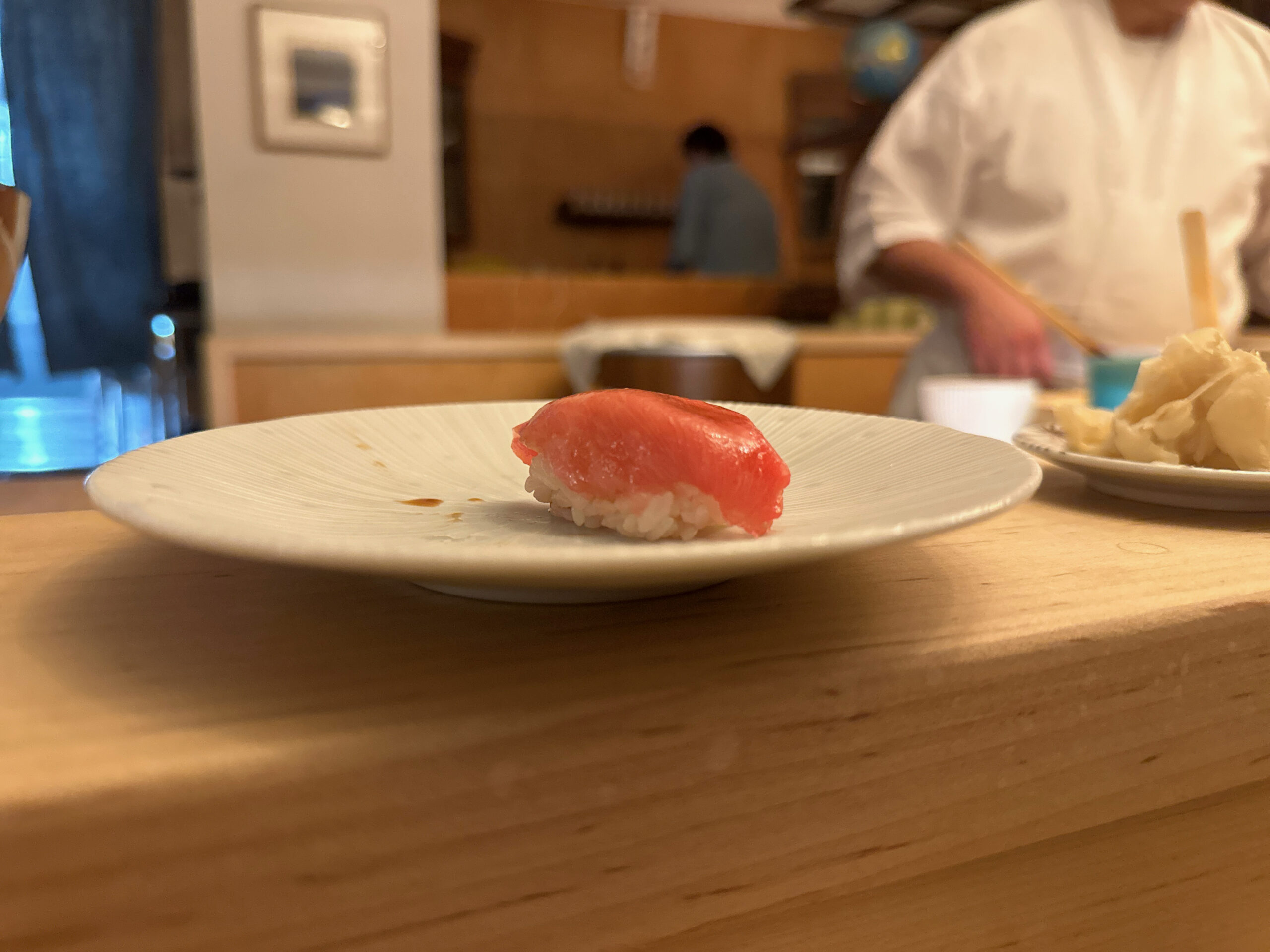
11: Chu Toro
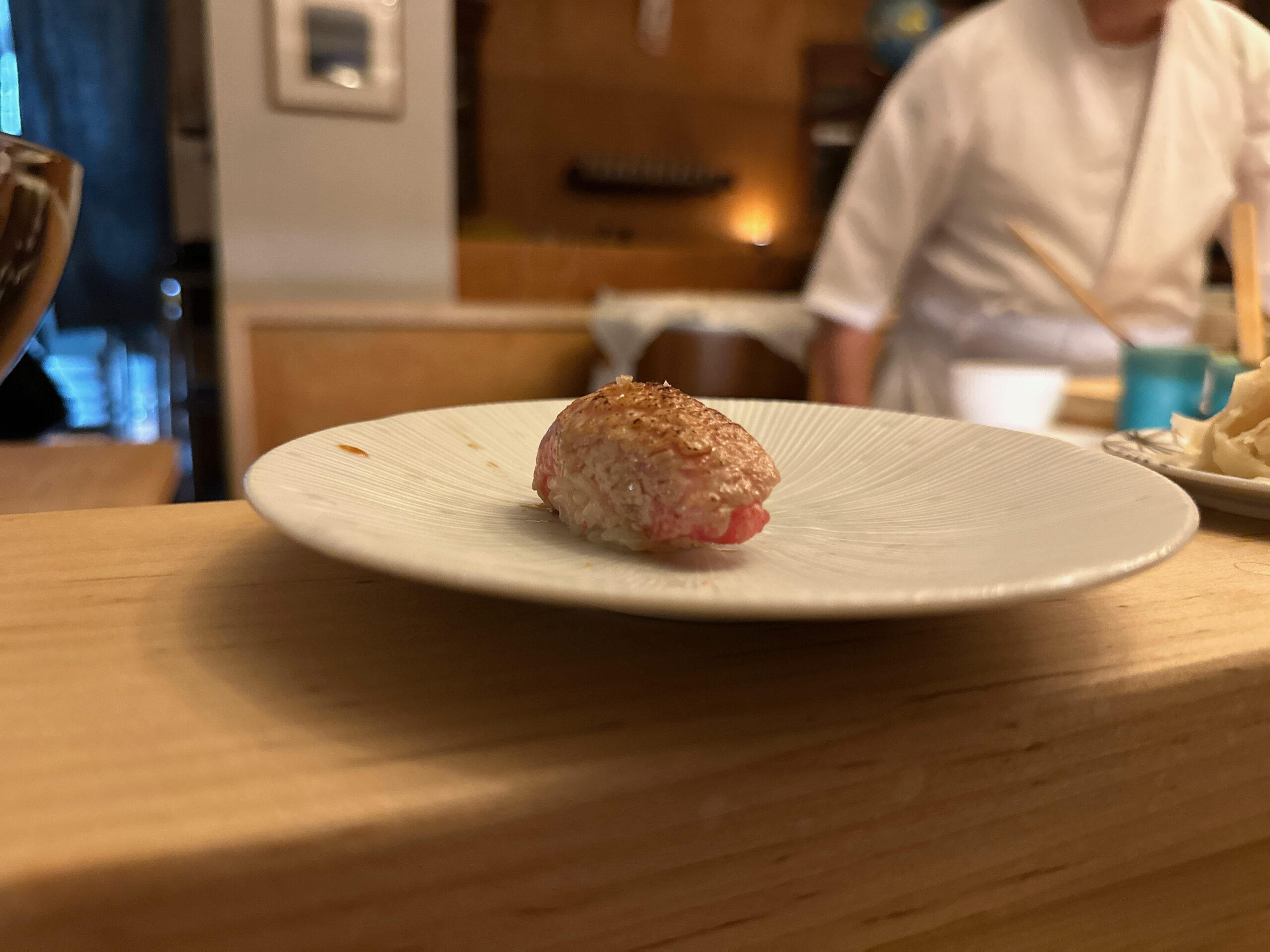
12: O Toro aburi
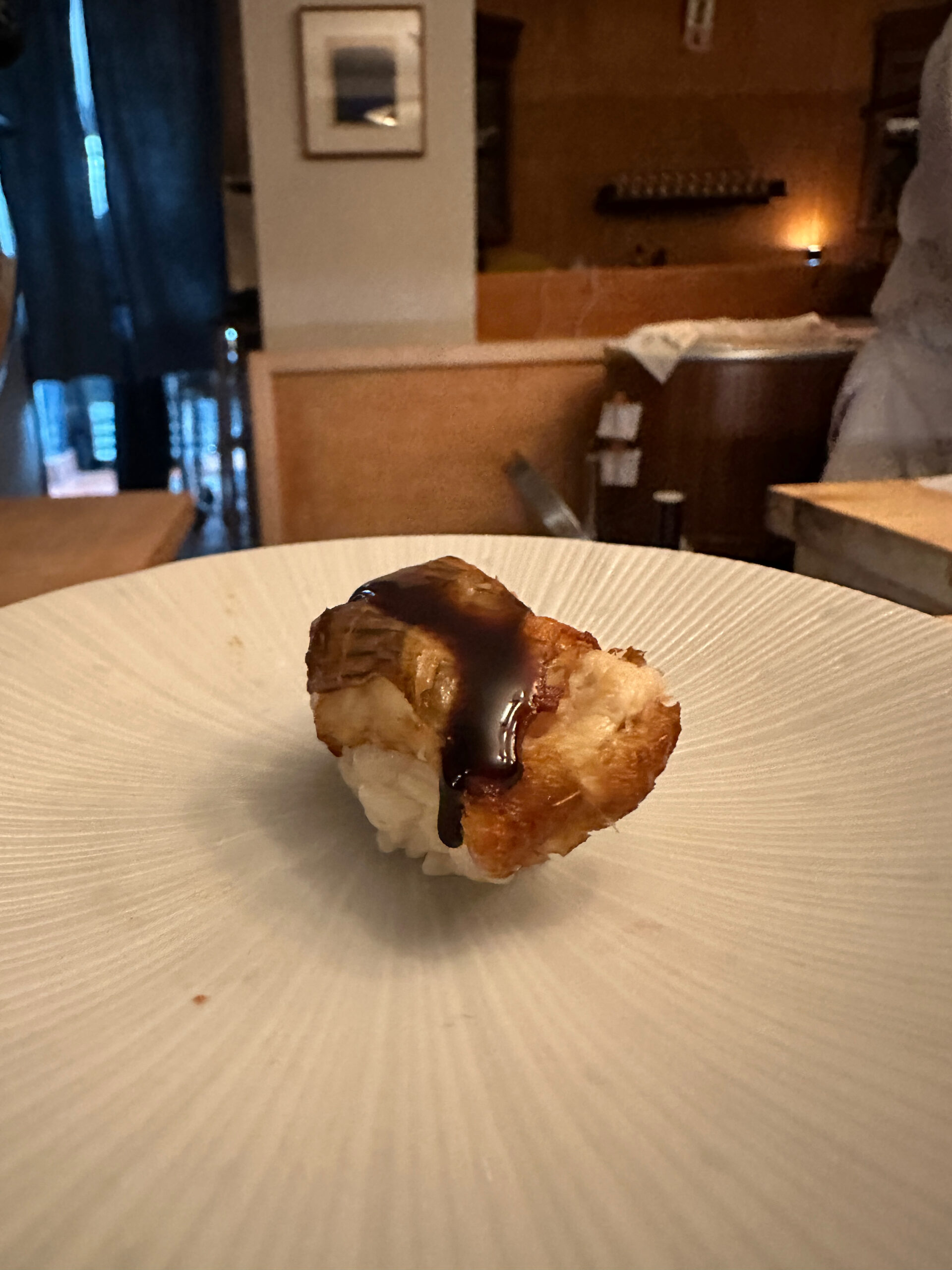
13: Anago
The 14th course (unpictured) was a negitoro temaki (hand roll). It’s on the thinner side – no cones.
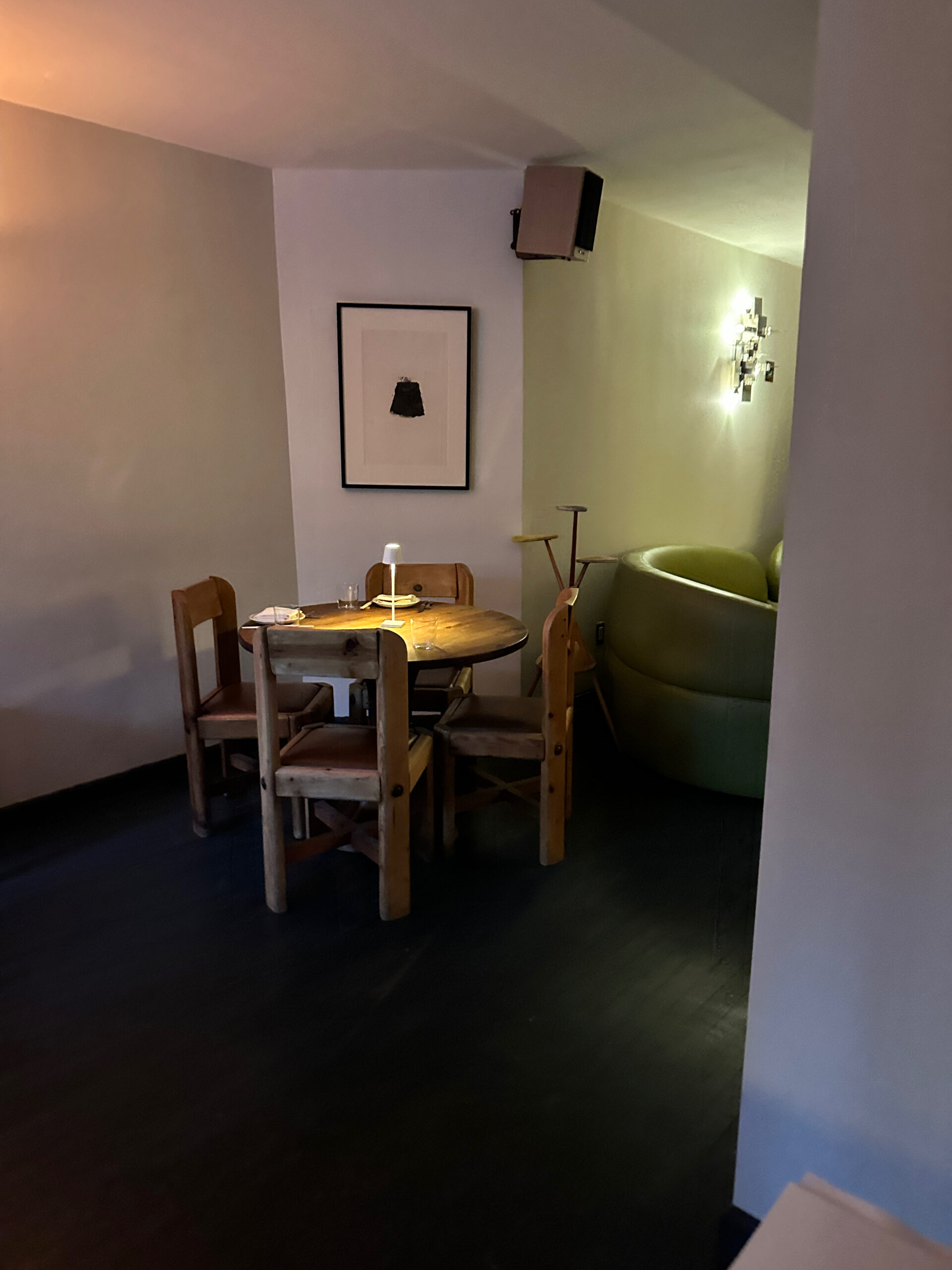
Front lounge doubles as a lounge and waiting area
A traditional, high-quality, nigiri-only omakase at $150 is rare company in Manhattan
I do this for a living (earning $0), and can’t think of many other sushiya at this level and price. Maybe Omakase Sushi Dairo?
And even with limited buzz, reservations are already difficult.
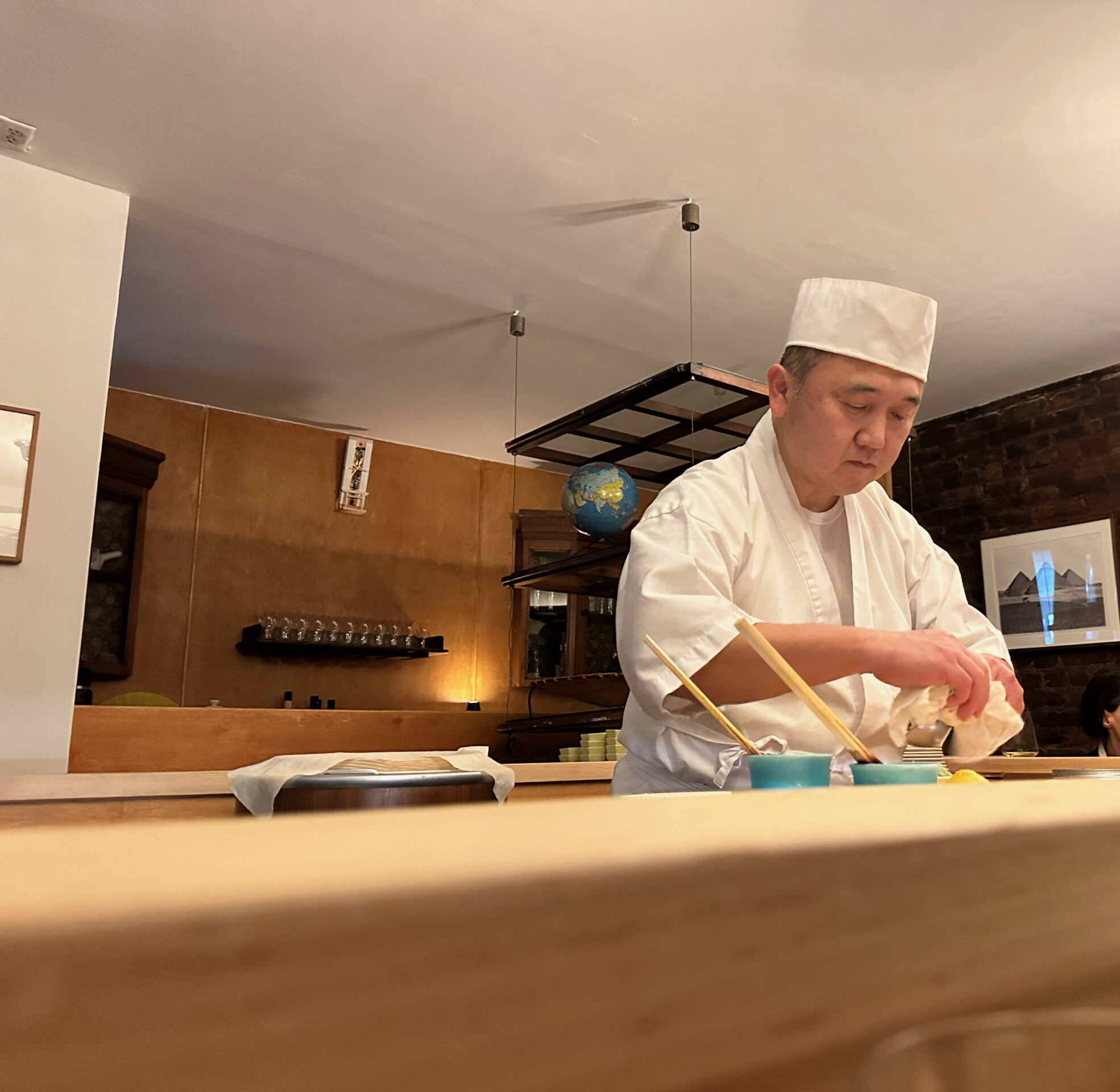
Mitsuru-san at work
The crazy thing is it could be even better
I’d love to see Mitsuru-san use more hikarimono, silver-skinned fish absent from most menus in New York, that nonetheless show the mark of a true legend. And let’s take the blowtorch away. For his sake.
Regardless, I have a feeling this will be a favourite among New York City connoisseurs.
Recommended.
